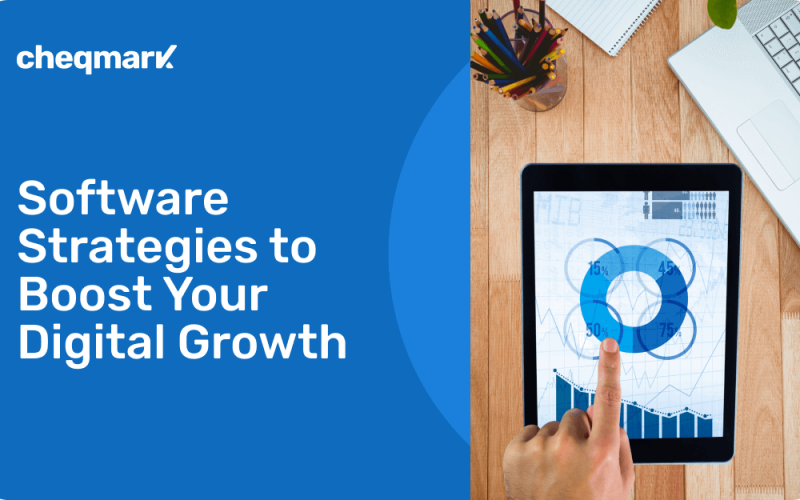Every business owner has watched in frustration as competitors seem to launch new features every week while their own software projects take forever and deliver unclear results.
Meanwhile, some companies move at lightning speed—they respond to customer requests instantly, roll out improvements constantly, and grow their business faster than anyone thought possible. The difference isn’t luck or unlimited budgets—it’s having a smart software strategy that turns technology from a headache into a growth machine.
The best companies have figured out how to use software as their secret weapon. They don’t just build apps—they build systems that help them make decisions faster, grow automatically, and create customer experiences that blow away the competition. These businesses understand that in today’s world, how well you handle software directly affects how fast you can grow.
The gap between companies with smart software strategies and those without keeps getting bigger. Some businesses are stuck with old, slow systems that hold them back, while others use modern approaches to build and launch software that actually drives real business results. The question isn’t whether you need a better approach—it’s whether you’ll get one before your competitors leave you in the dust.
Why Your Software Strategy Can Make or Break Your Growth
How well your business grows today depends a lot on how smart you are about building and using software. Software development strategies that actually connect to your business goals create huge advantages that help you grow faster while spending less money and dealing with less complexity.
Good software strategies don’t just get you applications—they create systems that keep getting better, help you respond quickly when the market changes, and let you handle more customers without everything falling apart.

The businesses that grow fastest treat software development like a superpower instead of just something the IT department handles. They invest in approaches that let them test ideas quickly, launch successful features fast, and scale up what works without breaking everything else.
Here’s what separates the winners from everyone else:
- A clear connection between software projects and actual business results that you can measure
- Step-by-step development that gets you results quickly and keeps improving based on feedback
- Systems that can grow with your business without needing to rebuild everything from scratch
- Automation focus that handles boring tasks so people can work on important stuff
- Smart use of data that helps you make better decisions and gives customers what they actually want
The Best Software Strategies That Actually Work
The most successful companies use specific approaches that get the biggest business impact from their software work while getting to market faster and using fewer resources.
Focus on Agile Development and Step-by-Step Progress
Agile development gets you working software fast and lets you improve things based on real feedback instead of guessing what people want. This approach helps you respond to opportunities and customer needs way faster than competitors who use slow, old-school methods.
The step-by-step nature of agile also reduces risk because you’re testing your ideas early and often. Instead of building a complete solution based on your first guess, you can test the basic functionality, get user feedback, and improve your approach based on how people actually use it.
Agile also helps you use your resources better by focusing on features that actually matter to users instead of building things that seem good on paper but don’t help anyone.
Use DevOps for Continuous Delivery and Automation
DevOps practices let you push updates and new features to customers continuously, which means you can deliver value faster, fix bugs quicker, and provide better customer service than competitors stuck with slow, manual processes.
Automation in DevOps also reduces mistakes and frees up your technical team to work on strategic projects instead of routine maintenance tasks. This efficiency lets you accomplish more with the same people while making your software more reliable.
Here’s what DevOps gives you for faster growth:
- Faster updates that let you respond to opportunities quickly
- Better software quality through automatic testing and monitoring
- Less manual work by automating routine tasks
- Better teamwork between developers and operations people
- More reliable systems through standardized processes
Make Decisions Based on Real Data
Data-driven software development makes sure you’re working on things that actually improve your business numbers instead of pursuing ideas that sound good but don’t deliver real results.
Modern software creates tons of data about how users behave, how well systems perform, and what business outcomes you’re getting. Companies that use this data well can optimize their software for better user engagement, higher sales conversion, and smoother operations.

Data-driven approaches also let you test new features before you fully commit to them, so you can validate ideas before spending lots of resources on full implementations.
Build for the Cloud to Scale Easily
Cloud-native development means your software can automatically handle more users and workload without breaking, while taking advantage of powerful services that would be expensive and complicated to build yourself.
Cloud platforms also give you access to advanced features like AI, analytics, and global content delivery that would cost a fortune to implement with traditional infrastructure.
Many smart companies speed up their cloud adoption by bringing in outside expertise. Poland team augmentation gives you access to skilled developers who know cloud technologies inside and out, plus they bring European market insights that can make your development even better.
Make Every Customer Feel Special with Personalization
Personalized software experiences keep customers more engaged, happier, and more likely to stick around by showing them relevant content and features based on what they actually want and how they behave.
Modern personalization needs software that can collect, analyze, and act on customer data instantly. This lets you show dynamic content, suggest relevant products, and customize interfaces that adapt to individual users.
Ways personalization drives growth:
- Understanding user behavior to see how different people use your software
- Smart content delivery that shows relevant information based on what someone’s doing
- Personalized recommendations that suggest products, features, or content people actually want
- Adaptive interfaces that adjust based on how someone likes to work
- Targeted messages that reach people with relevant information at the right time
Build Security In from Day One
Building security and compliance into your software from the beginning prevents expensive fixes later and reduces the risk of security breaches that can destroy customer trust and hurt your business reputation.
Modern security means thinking about protection at every level—from encrypting data and checking user identities to securing networks and controlling who can access what.
Compliance rules also change depending on your industry and where you do business, so it’s important to understand and build in the right standards from the start instead of trying to add them after your software is already finished.
How to Get Started and See Results Quickly
Getting your software strategy working doesn’t have to be complicated. You can start seeing improvements fast by focusing on the right approaches and building up your capabilities over time.
Start with Projects That Give You Big Wins
Begin with projects that can make a real difference to your business without requiring months of development or complicated integrations. These early wins help build momentum and show everyone why strategic software approaches actually work.
These first projects also let you test new development methods, tools, and team structures in lower-risk situations before you apply them to more critical business systems.
Build Teams That Actually Work Together
Good software strategies need technical teams and business people working together—people who understand what customers want, what opportunities exist, and what the business actually needs to succeed.

Teams that include developers, designers, product managers, and business representatives make better decisions about what to prioritize and how to build things that align with real business needs.
Measure What Actually Matters
Set up systems that track how your software improvements actually impact your business. This lets you make smart decisions about what to work on next and where to put your resources.
Key things to measure include how engaged users are, whether more people are converting to customers, how much more efficient your operations are, and whether customer satisfaction is improving—all stuff that directly connects to business results.
Plan for Continuous Improvement
Your software strategy should include processes for ongoing optimization and improvement based on how people use your software, customer feedback, and changing business needs.
This means regular review meetings, ways to test new ideas safely, and feedback systems that help you keep refining both what your software can do and how your team builds it.
Building a Competitive Edge That Lasts
Smart software strategies create lasting competitive advantages by helping you respond faster to market changes, deliver better customer experiences, and run your business more efficiently than competitors who are stuck with old-school approaches.
The secret to long-term success is building your team’s ability to adapt and improve continuously rather than just implementing one-time fixes. Companies that master strategic software development create advantages that keep getting stronger and become harder for competitors to copy over time.


